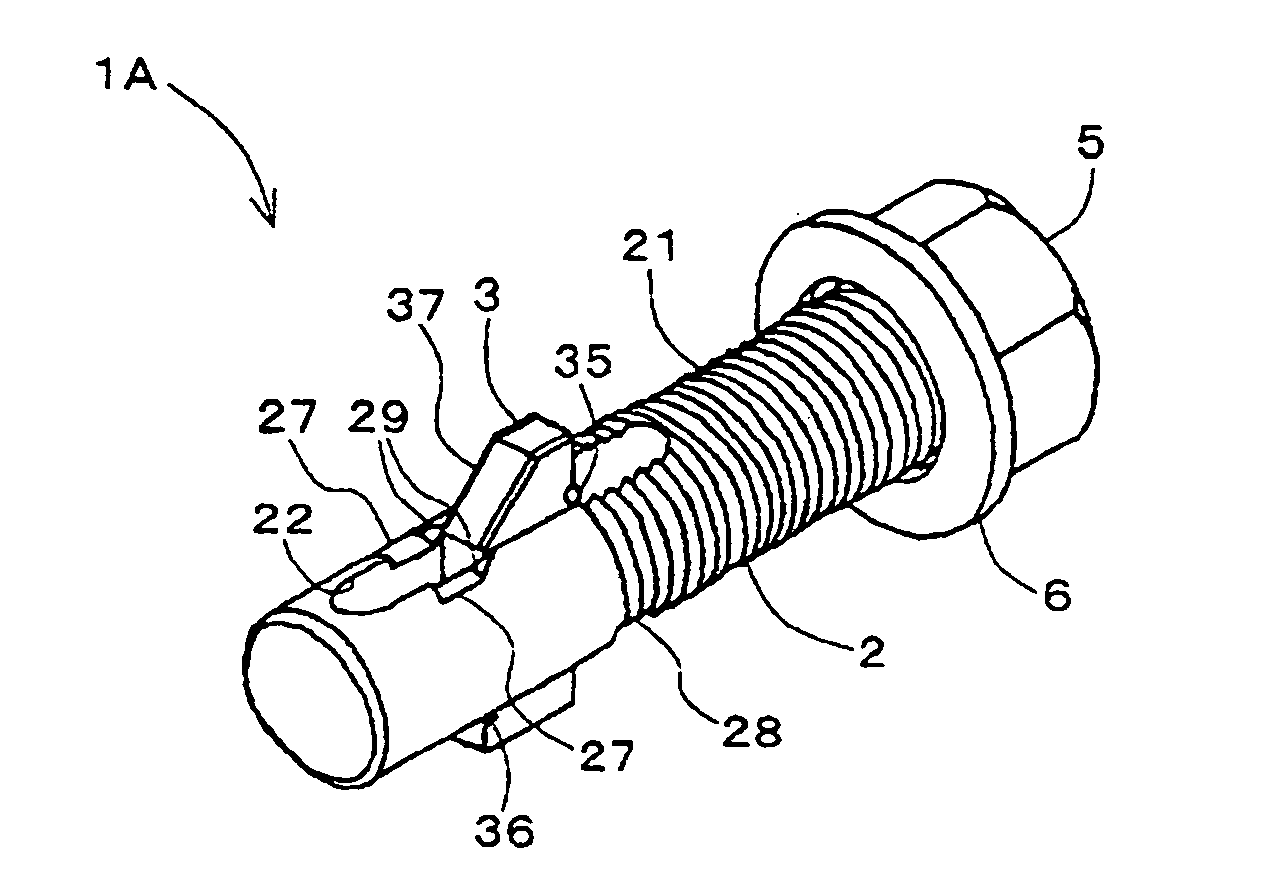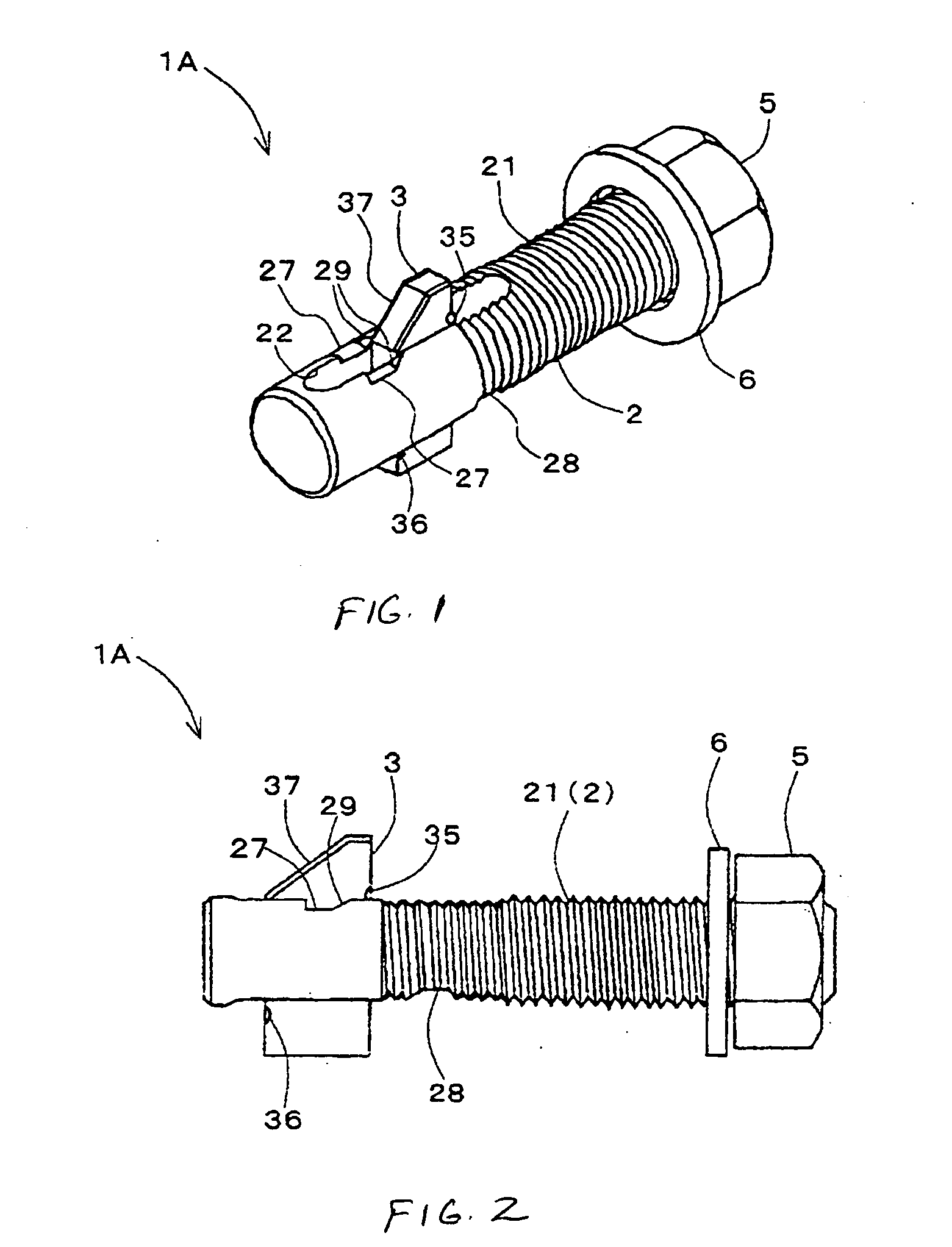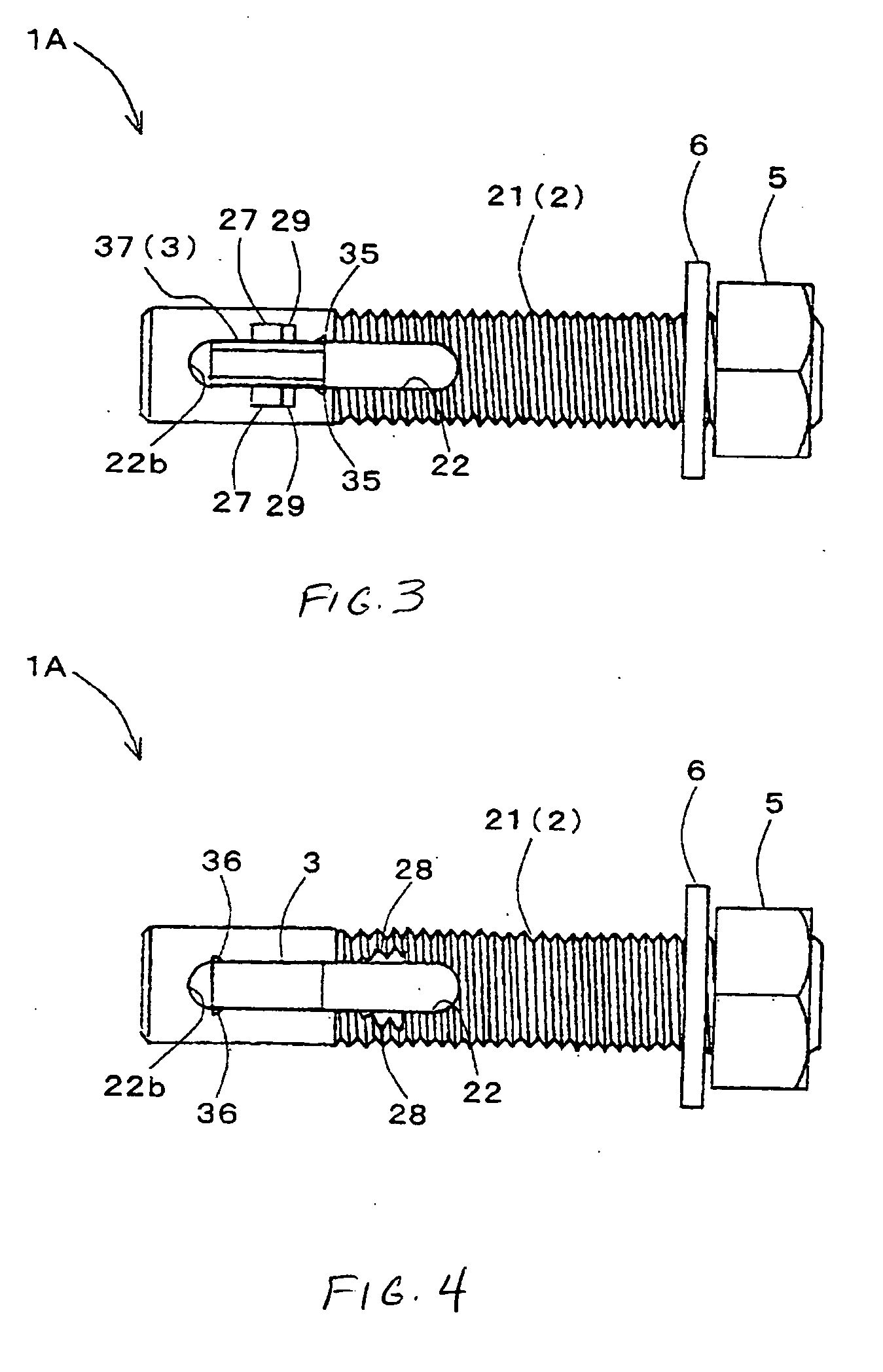Blind bolt and blind nut
a technology of blind bolts and nuts, applied in the direction of fastening means, screws, dowels, etc., can solve the problems of insufficient strength in the whole structure, inability to rotate the locking piece for use, and the locking piece may be subject to breakage, so as to smoothly rotate the locking piece and separate the rotary protrusions
- Summary
- Abstract
- Description
- Claims
- Application Information
AI Technical Summary
Benefits of technology
Problems solved by technology
Method used
Image
Examples
first embodiment
[0043] Referring to FIGS. 1 to 5, a blind bolt 1A of the first embodiment includes a bolt main body 2 having a male screw part 21 provided at one end thereof and an oblong hole 22 formed on the axis thereof at the other end, the oblong hole 22 rotatably holding a locking piece 3 to lock a beam X (FIG. 7). In addition, the male screw part 21 of the bolt main body 2 is screwed through a washer 6 into a nut 5, thereby fastening a member Y (FIG. 7) to the beam X, together with the nut 5 and said locking piece 3.
[0044] Each component shown in the first embodiment will be described in further detail. Referring to FIGS. 1 to 3, there is shown a pair of rotation supporting grooves 27, 27 provided along the oblong hole 22 of the bolt main body 2 so as to face with each other on edges of one opening of the oblong hole 22 on the axis thereof The locking piece 3 is made in the form of a nearly rectangular solid, and on edges of the long sides thereof, a pair of rotary protrusions 35, 35 is prov...
second embodiment
[0062] Next, referring to FIG. 14, a preferred application of the blind bolt 1B of the second embodiment will be described in detail.
[0063] If a member Y is secured to a beam X, the inside of which is inaccessible for mounting by means of the blind bolt 1B according to the second embodiment of the present invention, the locking piece 3 is completely accommodated within the oblong hole 22 as shown in FIG. 14(a), and the bolt main body 2 is inserted into a prepared hole h to dispose the locking piece 3 inside the beam X.
[0064] Further, as shown in FIG. 14 (b), when the bolt main body 2 is pivotally rotated approximately at an angle of 180 degrees to turn the rotation supporting grooves 27, 27 upwardly, the locking piece 3 rotates about the rotary protrusions 35, 35. Subsequently, the locking piece 3 slides the rotary protrusions 35, 35 on the rotation supporting grooves 27, 27 towards the male screw part 21. At the same time, the locking piece 3 rotates as the curved surface 38 slide...
third embodiment
[0066] Referring to FIGS. 15-21, the blind nut 11 of the present invention will be described in detail.
[0067] The blind nut 11 of the third embodiment is characterized by having no rotating shaft for a nut main body 12 and disposing protrusions within grooves for rotating the nut. In addition, if the nut main body 12 normally receives force energized by springs and other devices, it will get stuck into space between a beam X and a member Y. The third embodiment aids in overcoming this type of problem.
[0068] As shown in FIG. 15, the blind nut 11 of the third embodiment includes the nut main body 12 having a female screw hole 121 in a nearly central portion thereof and a nut frame body 13 for accommodating the nut main body 12. The nut frame body 13 is provided with a pair of arms 132, 132 extending parallel to each other and orthogonal to a flange 131 having a bolt inserting hole 131a.
[0069] Referring to FIGS. 15 to 17, the nut main body 12 is formed in the shape of nearly rectangu...
PUM
 Login to View More
Login to View More Abstract
Description
Claims
Application Information
 Login to View More
Login to View More - R&D
- Intellectual Property
- Life Sciences
- Materials
- Tech Scout
- Unparalleled Data Quality
- Higher Quality Content
- 60% Fewer Hallucinations
Browse by: Latest US Patents, China's latest patents, Technical Efficacy Thesaurus, Application Domain, Technology Topic, Popular Technical Reports.
© 2025 PatSnap. All rights reserved.Legal|Privacy policy|Modern Slavery Act Transparency Statement|Sitemap|About US| Contact US: help@patsnap.com



